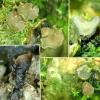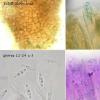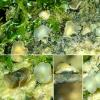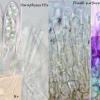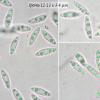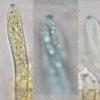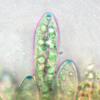
13-01-2026 07:28
 Danny Newman
Danny Newman
Chlorociboria glauca on indet. decorticate logThe

13-01-2026 10:13
 Danny Newman
Danny Newman
Cordieritidaceae sp. on indet. wood w/ Hypoxylon s

13-01-2026 07:14
 Danny Newman
Danny Newman
Neodasyscypha cerina on indet decorticate logThe S

13-01-2026 09:10
 Danny Newman
Danny Newman
Dasyscyphella chrysotexta on indet. decorticate ha

13-01-2026 08:43
 Danny Newman
Danny Newman
Tricladium varicosporioides on indet. decorticate

13-01-2026 08:49
 Danny Newman
Danny Newman
Coccomyces sp. on fallen Rhododendron leavesPretty

12-01-2026 22:02
Ethan CrensonHello all, I am hoping someone will have some ins

13-01-2026 07:57
 Danny Newman
Danny Newman
cf. Bombardia on indet. decorticate woodAppalachia

13-01-2026 07:51
 Danny Newman
Danny Newman
Atrocalyx sp. on indet. herbaceous stemAppalachian

11-01-2026 20:35
Hello.A very tiny pyrenomycete sprouting sparsely
A mollisioid aspect but...
Michel Hairaud,
04-01-2023 14:28
 Bonjour,
Bonjour, I have lately been given a puzzling collection ( unfortunately in poor state) on very rotten wood (Sambucus nigra most probable) covered with mosses.
Hymenium looks like a Mollisia but apos are more cupulate and may have sort of dark brown stipes and thick ans also dark ectal .
Ectal is of globulose cells,
Ascus 90-120 x 9-10 µm, H+ and IKI + (Calycina type)
Spores guttulate fusoid , 11-14 x 3 µm
Paraphyses cylindrical, hyaline, no VBs , x 2 µm
CRB gives a pink-red reaction to hymenium ( Gelatinose tissues ?)
I did not test KOH and there is no material left
I do not even guess what the genus could be and wonder whether someone could help from the images hereunder ?
Thanks anyway . Amitiés. Michel
Hans-Otto Baral,
04-01-2023 16:12

Re : A mollisioid aspect but...
Hi Michel,
the moss and algae indicate that the fungus grew on the upper part of the substrate. I am not sure if it is drought-tolerant. Young apos are totally black and there is a black stipe. The diameter I can only guess, do you know? Around 4 mm?
No idea so far, perhaps a Ploettnerulaceae.
Zotto
Michel Hairaud,
04-01-2023 19:14

Re : A mollisioid aspect but...
According to the collector, the apos grew on the side of the dead branch still attached at 1m above the ground, mostly on places without mosses
I would also say that 4 mm large is a maximum
The black small apos seen on the images are completely rotten . I would say that the young ones were rather grey
Michel
I would also say that 4 mm large is a maximum
The black small apos seen on the images are completely rotten . I would say that the young ones were rather grey
Michel
Hans-Otto Baral,
04-01-2023 20:47

Re : A mollisioid aspect but...
So the black ones are no anamorph either.
The fungus is apparently without crystals.
A hard nut!
Michel Hairaud,
04-01-2023 21:33

Re : A mollisioid aspect but...
Yes no crystal
I must admit the documentation presented is uncomplete . But the outer surface and the ''sort of'' stipe are so unusual that I thought this could have led to a hint.
Hope it can be found again.
Do you confirm that the red reaction of the hymenium in BRC means that there is a gelified tissue ? Michel
I must admit the documentation presented is uncomplete . But the outer surface and the ''sort of'' stipe are so unusual that I thought this could have led to a hint.
Hope it can be found again.
Do you confirm that the red reaction of the hymenium in BRC means that there is a gelified tissue ? Michel
Hans-Otto Baral,
04-01-2023 21:44

Re : A mollisioid aspect but...
I would rather say lilac and this is indeed a reaction for gel, but can be due to a very thin layer on the wall surface, without any gelification of the apothecium or hymenium.
Michel Hairaud,
04-01-2023 23:42

Re : A mollisioid aspect but...
Ok.Thanks, Zotto
Michel Hairaud,
09-01-2023 18:10

Re : A mollisioid aspect but...
Bonjour, we collected new specimens yesterday on the very same place.
The substrate is dead Buxus (H. hysterinum also present ) , on bark or also on decorticated wood.
The apos diameter do not exceed 2, 8 mm , hymenium grey at first looking somehow gelatinous (but tender to cut, so not gelatinized) , yellowish with age.
Not all apos develop lon stipes
Ascus 90 - 105 (130) , H+, IKI + B Calycina type. Spores 12-14 x 3,35 µm mostly biguttulate , see pics
No Vbs at all in paraphyses
No reaction in KOH at all.
No crystals
CRB does react in violet on hymenium and blue on ectal cells
External surface of hyaline short hairs 1-2 septate, last cell up to 22 x 6 µm
I think it could match either Dennisiodiscus or Xeropilidium (not the same families !) I attach new pictures
AmitiésMichel
The substrate is dead Buxus (H. hysterinum also present ) , on bark or also on decorticated wood.
The apos diameter do not exceed 2, 8 mm , hymenium grey at first looking somehow gelatinous (but tender to cut, so not gelatinized) , yellowish with age.
Not all apos develop lon stipes
Ascus 90 - 105 (130) , H+, IKI + B Calycina type. Spores 12-14 x 3,35 µm mostly biguttulate , see pics
No Vbs at all in paraphyses
No reaction in KOH at all.
No crystals
CRB does react in violet on hymenium and blue on ectal cells
External surface of hyaline short hairs 1-2 septate, last cell up to 22 x 6 µm
I think it could match either Dennisiodiscus or Xeropilidium (not the same families !) I attach new pictures
AmitiésMichel
Hans-Otto Baral,
09-01-2023 18:25

Re : A mollisioid aspect but...
Hi Michel
this could also be a Helotiaceae. I suggest to study the apical ring structure of dead asci.
Zotto
Michel Hairaud,
11-01-2023 11:50
Hans-Otto Baral,
11-01-2023 12:28

Re : A mollisioid aspect but...
I agree, and I guess that the excipulum is dark brown towards the base. Are there no subicular hyphae at all, or are they hyaline and not brown as typical of many mollisioid fungi?
In my database I have nothing on Buxus with such spore size.
Andgelo Mombert,
11-01-2023 13:05

Re : A mollisioid aspect but...
Hello,
Pyrenopeziza 'subviridula' isn't possible ?
Andgelo
Pyrenopeziza 'subviridula' isn't possible ?
Andgelo
Hans-Otto Baral,
11-01-2023 14:31

Re : A mollisioid aspect but...
I fact this appears to be the best solution! I remeasured a bit the spores, which is not easy without a scale. I arrive at 12-14 x 3-3.7 µm, a bit too large but maybe in the scope of variation, or a collective species.
Michel Hairaud,
11-01-2023 18:37

Re : A mollisioid aspect but...
Zotto,
I did not observe mollisioid subicular hyphaae (see pic attached )
Andgelo : I would say P. subviridula is the closest proposal
Compared to previous collections of P. subviridula, many features do match . Nevertherless, ascus length is here longer . Spores dimensions are a bit larger but not that much, most would actually fit. Young apos are never so dark coloured as seen in Zotto's files.
May be P. subviridula is a complex ?
By the way, it seems that the combination P. subviridula is still a provis. name or did I miss the validation ?
Anyway we have somewhere to situate this collection . Good job ! Thank you so much for that.
For the latest collection :MH 80123 France Vienne Voulème. Dead Buxus sempervirens bark and wood . Exsic available.
AMitiés.
Michel
I did not observe mollisioid subicular hyphaae (see pic attached )
Andgelo : I would say P. subviridula is the closest proposal
Compared to previous collections of P. subviridula, many features do match . Nevertherless, ascus length is here longer . Spores dimensions are a bit larger but not that much, most would actually fit. Young apos are never so dark coloured as seen in Zotto's files.
May be P. subviridula is a complex ?
By the way, it seems that the combination P. subviridula is still a provis. name or did I miss the validation ?
Anyway we have somewhere to situate this collection . Good job ! Thank you so much for that.
For the latest collection :MH 80123 France Vienne Voulème. Dead Buxus sempervirens bark and wood . Exsic available.
AMitiés.
Michel
Hans-Otto Baral,
11-01-2023 20:39

Re : A mollisioid aspect but...
Hi Michel
did you measure the ascus width in the Buxus sample? And di you compare a bit the aspect of the wood, could it be that the first sample was also Buxus? Sambucus should look quite distinct in cross section or break.
P. subviridula is a nom. prov., I think of mine. The protologue of P. viridula you can see in my viridula folder.
Could your perhaps complete your statement about apo size: ....-2.8 mm? The lower value should also mean a mature apothecium. Regrettably I have no info for most of the finds in my folder, but for two I have a size of 0.5-1.2 mm and for HB 8006 only 0.25-0.38 mm!
Zotto
Michel Hairaud,
12-01-2023 09:37

Re : A mollisioid aspect but...
The first collection, starting this post was indeed on Buxus also , not Sambuscus as previously suggested . There is no doubt now as we (Bruno Coué & me) made part of the last collection on the very same dead Buxus trunk and branches.
The smallest mature apo I measured is 0,7 large
Michel
The smallest mature apo I measured is 0,7 large
Michel
